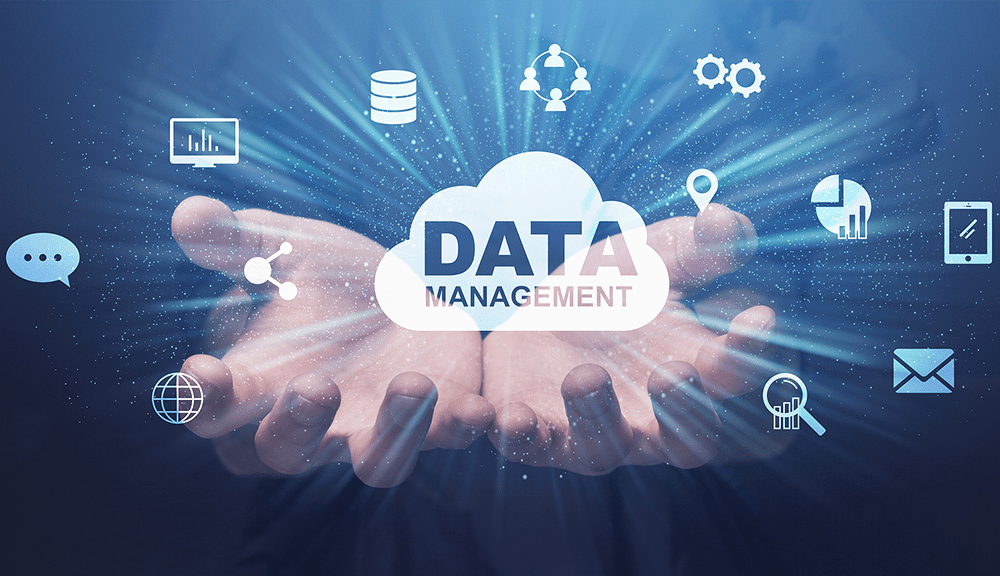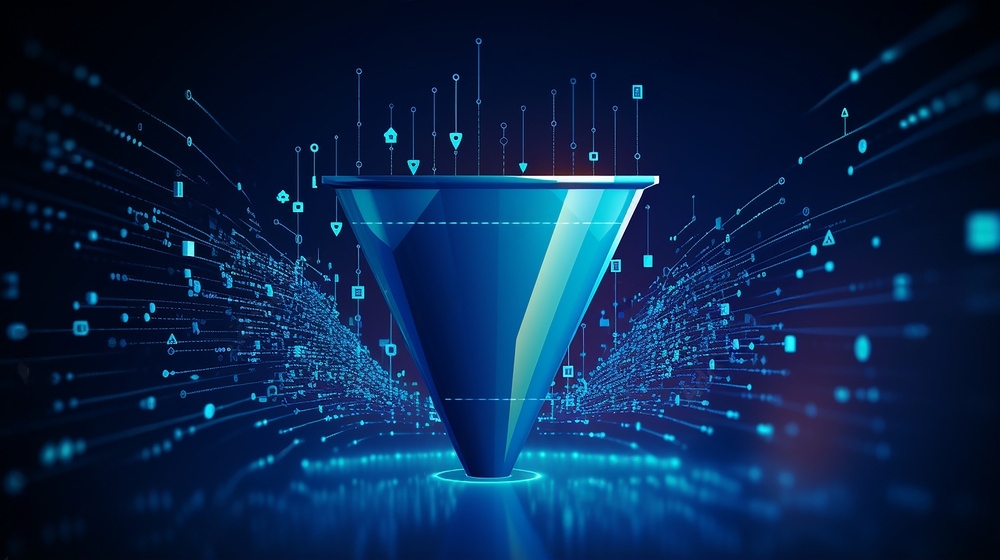Have you ever spent hours working on spreadsheets, only to be left staring at rows and columns that seem more like cryptic code than valuable information? We’ve all been there. B2B data can feel like an untapped treasure chest—brimming with potential but frustratingly locked away.
The good news? You don’t need a decoder ring to unlock the power of B2B data. What you need is the magic of storytelling. Think about it—stories have captivated us since the dawn of time. They transport us to new worlds, make us feel emotions, and, most importantly, make complex ideas relatable. Data storytelling does the same thing but for the business world.
Imagine transforming those dry numbers into a captivating narrative. A story that reveals hidden trends, exposes customer needs and paints a clear picture of the path to success. Data storytelling isn’t just about presenting facts; it’s about breathing life into them, making them resonate with your audience, and ultimately driving real business results.
So, if you’re tired of data feeling like a dusty old tome and you’re ready to explore its true potential, then buckle up!
Dive into this tutorial and equip yourself with the skills and strategies you need to master your B2B data! We’ll show you how to turn that confusing muddle into an engaging story that educates and encourages action.
Get ready to see your data’s full potential!
What is B2B data?
Imagine you’re at a networking event, but instead of meeting people, you’re meeting businesses! B2B data is like all the information you’d gather about those businesses. It’s not just names and logos, though. It’s things like what kind of products they sell, how big they are, and even what kinds of problems they might be facing.
Think of it like a supercharged business card. Where a normal card tells you someone’s name and title, B2B data gives you the whole story. It tells you if that company might need your services or if they’re potential partners. It’s like having a cheat sheet to understand who’s who in the business world.
This data can come from all sorts of places, like websites, news articles, and even social media. By collecting and analyzing this B2B data, you can make smarter decisions about your own business. It’s like having a secret tool to find new customers, understand your competition, and stay ahead of the curve.
How does B2B data work?
B2B data is like having a superpowered business directory. It goes beyond names and logos, telling you what companies do, how big they are, and their potential needs. Analyzing this data is like having a map to target the perfect companies with the right message, boosting your sales and success.
In simple terms, B2B data works like a detective kit for businesses. You gather clues—information on other companies, their size, and what they do. You analyze these clues—see patterns—and find businesses that need what you offer. This intelligence helps you target the right companies with the right message at the right time.
How do you turn B2B data into storytelling?
Have you ever gotten stuck in a conversation filled with nothing but statistics and jargon? Yeah, it’s not exactly captivating, right? B2B data can sometimes feel the same way—a whole bunch of numbers and figures that leave you scratching your head. But what if you could transform that data into something engaging—something that actually sticks in people’s minds? That’s where the magic of B2B data storytelling comes in.
Think of it like this: You’ve got a treasure box overflowing with valuable information about businesses, their needs, and their challenges. But how do you unlock that treasure and use it to your advantage? Storytelling becomes your key. Stories have the power to connect with us on a human level and make us care about what’s happening. The same goes for B2B data.
Here’s how you weave that data into a compelling story:
-
Meet the Hero:
This isn’t your company; it’s your ideal customer! Imagine a business owner facing a common struggle—something your product or service can solve. Maybe they’re frustrated with low sales or struggling to reach the right audience.
-
Paint the Problem:
This is where your data comes in. Use real statistics to showcase the struggle. While research hasn’t definitively shown a majority of businesses waste marketing dollars on the wrong audience, several studies indicate significant inefficiencies. Share that pain point with your audience.
-
Enter the Champion:
Here’s where your B2B data truly shines! Show how your product or service became the hero’s champion. Did you increase sales leads by 20% for companies like your ideal customer? Quantify that success with real numbers!
-
Celebrate the Victory:
End on a high note! Maybe a happy customer quote or a detailed case study can showcase how your solution transformed the hero’s business.
You can create a stronger connection with potential clients by incorporating statistics into an approachable narrative. It’s not just throwing numbers at them; it’s a narrative they can see themselves in. This emotional connection makes your message far more memorable and impactful, turning that B2B data into a powerful tool for success.
What is insight in B2B data storytelling?
B2B data storytelling—it’s all about turning those spreadsheets into stories that resonate, right? But what makes a story truly powerful? That’s where “insight” comes in.
Think of it like this: data is like a pile of ingredients—numbers, trends, patterns. Insight is the secret sauce that turns those ingredients into a delicious dish. It’s the “aha moment” you discover by digging into the data.
Here’s how it works in B2B storytelling:
- Imagine you’re analyzing website traffic data. You see a surge in visits from a specific industry. That’s data.
- The insight? Maybe that industry is facing a new challenge that your product solves perfectly!
Suddenly, the data becomes a story. You can tell the tale of how your product helped businesses in this industry overcome their struggles.
Insight takes your story beyond just facts. It reveals a hidden truth, a surprising connection, or a golden opportunity. It’s the “why” behind the data—the reason your audience should care. By uncovering these insights, you can transform B2B data storytelling from informative to truly impactful.
What are the 5 steps to visual data storytelling?
While numbers and charts hold power, let’s admit it, gazing at a spreadsheet isn’t exactly captivating for engagement. That’s where visual data storytelling swoops in to save the day! It’s about taking your B2B data and transforming it into visuals that grab attention and tell a clear story.
Here’s a breakdown of the 5 key steps:
Know Your Hero (and Villain)
Every story needs a protagonist and an antagonist, right? In B2B data storytelling, your hero is your ideal customer—the business struggling with a problem you solve. The villain? Their current frustrations, like low sales or reaching the wrong audience.
Pick the Perfect Picture
Not all charts are created equal! Different visuals work best for different data. Imagine you want to show a trend over time; a line chart is your champion. Trying to compare categories? Bar charts might be your best bet. Choose the visual that clearly communicates your data’s message.
Keep it Clean and Clear
Visual clutter is the enemy of storytelling. Think minimalist design – focus on highlighting key data points and ditch the unnecessary bells and whistles. Use clear labels, easy-to-read fonts, and a limited color palette for maximum impact.
Let the Data Do the Talking
Charts and graphs are fantastic, but they shouldn’t do all the work. Add context with clear titles, captions, and annotations. Maybe a call-out box highlighting a surprising statistic or a trendline showing a significant shift. Your visuals should guide the audience, not leave them guessing.
Story Time!
Now comes the magic – weave your data and visuals into a compelling narrative. Talk about the hero’s struggle, showcase the data as evidence of their pain points, and then introduce your solution as the knight in shining armor. End with the hero’s victory, using visuals to quantify your success with real numbers.
These steps will convert your B2B data from a confused muddle into a visually appealing tale that connects with your audience and produces results. Remember that the story you tell with the data is as important as the facts.
What three key components are required in a data storytelling narrative?
Have you ever felt like B2B data is a plate full of numbers with no flavor? Data storytelling takes those numbers and turns them into a delicious dish that informs and inspires. Here’s the secret recipe with just three key ingredients:
- The Data That Matters: This is your juicy steak—the heart of the story. It’s the specific numbers, trends, and insights you’ve uncovered from your B2B data. This is the “what” that sets the stage for your narrative.
- The Compelling Story: This is where the magic happens! You create a clear narrative with a beginning, middle, and end. Imagine your ideal customer as the hero facing a challenge your product or service solves. Use data to show their struggle, then introduce yourself as the solution, backing it up with real numbers that prove your success.
- Eye-Catching Visuals: Numbers can be dry, but visuals make them sing! Think charts, graphs, or even well-chosen images. These visuals bring your data to life and grab attention. Keep it simple and clean; clear labels, limited colors, and a minimalist design are key.
Combine these three ingredients, and voila! You’ve got a data storytelling masterpiece – a tasty narrative that’s both informative and engaging. Your audience will walk away satisfied, with a clear understanding of your message and maybe a newfound interest in your product or service.
In what ways can data help create compelling stories?
Data can be a powerful tool for storytelling in a few key ways:
- Unveiling Hidden Truths: Data analysis can reveal surprising patterns and connections you might not have noticed otherwise. These “insights” become the “aha moments” that grab your audience’s attention and make your story unique.
- Building Credibility: Numbers and statistics lend weight to your narrative. By backing up your claims with data, you build trust with your audience and make your story more believable.
- Making the Complex Clear: Data visualization tools like charts and graphs can take complex information and present it in a way that’s easy to understand. This allows you to communicate your story effectively, even to those without a technical background.
- Evoking Emotions: Data can be used to paint a picture of a situation, highlighting challenges, struggles, and triumphs. By tapping into emotions, data storytelling makes your story relatable and leaves a lasting impression.
- Guiding Decisions: A compelling data story doesn’t just inform; it can inspire action. By using data to showcase the impact of a problem or the effectiveness of a solution, you can motivate your audience to take the next step.
Conclusion
B2B data storytelling offers a powerful approach to revealing the true potential of B2B data. By weaving insights and narratives around collected information, businesses can effectively communicate complex findings to diverse audiences.
This approach fosters not only understanding but also engagement, ultimately driving informed decision-making and propelling business growth. As B2B data continues to evolve, mastering data storytelling will be instrumental in achieving a competitive edge.
If you want to get the best data for your business, that can tell the story, and we are here to help. To learn more about our data management services, contact us now.
FAQs
Why is data storytelling important in B2B communication?
Data storytelling allows you to go beyond just presenting raw numbers. By weaving data into a narrative, you can:
- Capture attention: Stories are inherently engaging, making complex data easier to understand and remember.
- Build trust: Data provides evidence to support your claims, fostering trust and credibility with your audience.
- Spark emotions: Data stories can connect with viewers on an emotional level, making your message more impactful.
- Drive action: Compelling data stories can inspire audiences to take the next step, whether it’s contacting you, learning more, or making a purchase.
What are the key components of a data storytelling narrative?
Effective data stories typically include:
- The Flavorful Data: The core information you’ve uncovered – numbers, trends, and insights that set the stage for your story.
- The Compelling Story: A clear narrative with a beginning, middle, and end. Consequently, this often involves introducing your ideal customer (the hero) facing a challenge, and showcasing data to illustrate their struggle. Thus, presenting your product or service as the solution, with data to back up its success.
- The Appealing Presentation: Engaging visuals like charts, graphs, or well-chosen images that bring your data to life and make it easy to understand.
What kind of data can be used for data storytelling?
Almost any kind of B2B data can be used for storytelling! Here are some examples:
- Sales data: Show trends in customer acquisition or retention.
- Website traffic data: Highlight areas of high interest or identify potential customer segments.
- Customer survey data: Use quotes or statistics to illustrate common challenges or pain points.
- Social media data: Demonstrate brand sentiment or audience demographics.
How can I make my data story visually appealing?
- Keep it clean and clear: Avoid clutter and focus on highlighting key data points.
- Use visuals that complement your data: Choose charts and graphs that effectively represent the information.
- Maintain a consistent design: Use a limited color palette and clear fonts for a professional look.
Where can I find inspiration for data storytelling?
There are many resources available online and offline!
- Look at case studies from data visualization companies.
- Search for award-winning data storytelling examples.
- Follow industry publications or blogs that focus on data and marketing.






